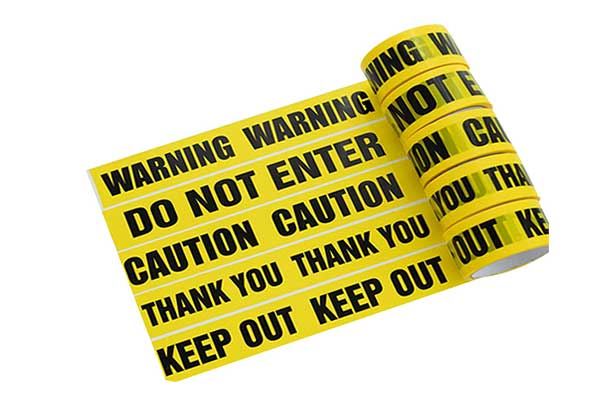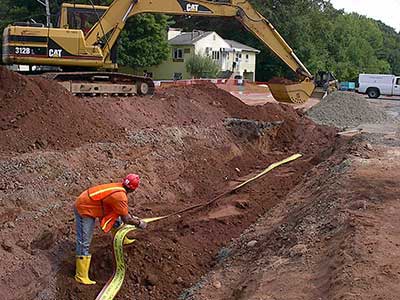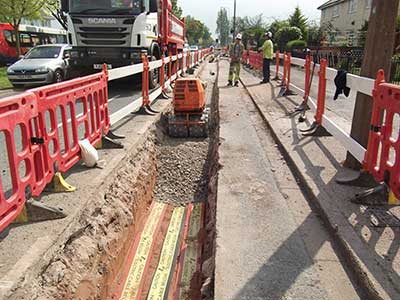What is Underground Warning Tape and What is it Used For?
In the realm of construction and infrastructure development, safety is paramount. Yet, beneath the surface lies a network of pipes, cables, and utilities crucial for our modern way of life. To ensure the safety of workers and prevent damage to these vital systems, underground warning tape emerges as an unsung hero. But what exactly is underground warning tape, and why is it so essential?

What is Underground Warning Tape?
Underground warning tape is a brightly colored tape designed to be buried above underground utilities and infrastructure. It serves as a visual warning to excavators and construction workers, indicating the presence of buried pipelines, cables, or other utilities below the surface.
What is Underground Warning Tape Used For?
- Preventing Accidental Damage: One of the primary purposes of underground warning tape is to prevent accidental damage to buried utilities during excavation or construction activities. By providing a visible indication of what lies beneath, it alerts workers to exercise caution and take appropriate measures to avoid disrupting these critical systems.
- Enhancing Safety: Construction sites can be bustling environments where multiple activities are happening simultaneously. Underground warning tape helps enhance safety by reducing the risk of excavation-related accidents, such as ruptured gas lines or severed electrical cables, which could lead to injuries, fatalities, or costly repairs.
- Compliance with Regulations: Many regions have regulations mandating the use of underground warning tape during excavation projects. Compliance with these regulations not only helps ensure the safety of workers and the public but also mitigates legal liabilities for construction companies and contractors.
- Preserving Infrastructure: Damage to underground utilities can have far-reaching consequences, including service disruptions, environmental contamination, and financial losses. By alerting excavators to the presence of buried infrastructure, underground warning tape aids in preserving these vital systems and avoiding costly downtime or repairs.


Types of Underground Warning Tape:
- Color-Coded: Underground warning tape typically comes in bright colors, with each color representing a specific type of utility. For example, red tape may indicate electrical lines, while yellow tape signifies gas pipelines. This color-coded system helps workers quickly identify the type of utility buried underground.
- Reflective: Some underground warning tapes feature reflective properties, making them more visible in low-light conditions or at night. This added visibility further enhances safety on construction sites, reducing the risk of accidents even in challenging environments.
Installation and Best Practices:
Installing underground warning tape involves burying it a few inches below the surface, directly above the utility it’s meant to protect. It should be placed at a depth that allows it to be easily detected during excavation but not so deep that it’s difficult to locate. Additionally, proper documentation of the tape’s location should be maintained for future reference.
Conclusion:
In the intricate web of underground infrastructure, underground warning tape serves as a beacon of caution, guiding excavators away from potential hazards and safeguarding the vital systems that power our communities. Its role in preventing accidents, enhancing safety, and preserving infrastructure cannot be overstated, making it an indispensable tool in the construction industry’s arsenal. By understanding and implementing best practices for the installation and use of underground warning tape, construction professionals can ensure a safer and more efficient working environment for all involved.

